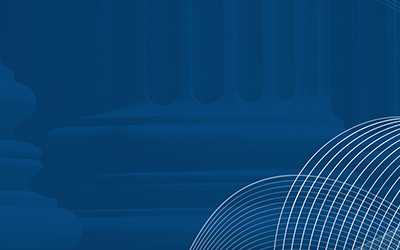The Consolidated Appropriations Act (CAA), signed into law on December 27, 2020, included a requirement that starting December 27, 2021, brokers and consultants supplying services to Employee Retirement Income Security Act (ERISA) group health plans disclose to plan fiduciaries (typically the plan sponsor), in writing, direct and indirect compensation they receive for providing services to such plans. This disclosure requirement was effective for “contracts or arrangements entered into, extended, or renewed on or after December 27, 2021.” See our Compliance Insights article, “Employee Benefits Broker Compensation Disclosure Requirements Are Coming Soon,” for more information.
On Thursday, December 30, 2021, the Department of Labor (DOL) issued Field Assistance Bulletin No. 2021-03, (FAB) a set of questions and answers outlining new, clarifying guidance for enforcing the requirements. It is important to note that the DOL did highlight that a key goal of the disclosure requirements is to enhance fee transparency – including “for service” arrangements that involve payment of indirect compensation. Disclosures must include information about indirect compensation. The DOL has provided an Example of Indirect Compensation.
Field Assistance Bulletin No. 2021-3 includes eight Questions and Answers (Q&As). Below is a summary of each Q&A.
Q&A 1 outlines the use of the pension plan disclosure provisions as a good-faith and reasonable step for compliance.
The DOL has said that they will not exercise enforcement action if, when complying with these rules, brokers and consultants use a “good faith, reasonable interpretation of ERISA.” The DOL refers to similar guidance for retirement and pension plans and stated that group health plans that follow that guidance would likely be taking a good faith reasonable interpretation of the requirements. The DOL states, “Although group health plan compensation arrangements may differ from pension plan compensation, much of the terminology and many of the requirements in section 408(b)(2)(B) as added by the CAA and the Department’s regulation on pension plan disclosure are identical, such that the Department’s explanations of such terminology and requirements may be useful when analyzing the new provisions in ERISA section 408(b)(2)(B).”
Q&A 2 confirms to whom the compensation disclosure requirements apply.
It is clear from the FAB that the new requirements apply to both fully insured and self-funded ERISA plans, including grandfathered plans. The DOL states, “ERISA section 733(a) defines a ‘group health plan’ as ‘an employee welfare benefit plan to the extent that the plan provides medical care … to employees or their dependents … directly or through insurance, reimbursement, or otherwise.’ This term includes both insured and self-insured group health plans, including grandfathered health plans, as defined in section 1251(e) of the Patient Protection and Affordable Care Act.”
Q&A 3 confirms that certain excepted benefits are covered by the requirements.
The DOL states that although excepted benefits such as limited-scope dental and vision policies are excepted from certain requirements, such as those under the Affordable Care Act (ACA), they are ERISA plans and therefore subject to the broker compensation disclosure requirements.
Q&A 4 clarifies the scope of the service providers subject to the compensation disclosure requirements.
The FAB discusses that neither the term broker or consultant is defined by ERISA, and “The fact that a service provider does not call itself a ‘consultant’ or charge a ‘consulting’ fee is not dispositive, for example, as to whether the provider is ‘consulting’ for purposes of section 408(b)(2)(B).” The guidance is clear that whether a broker or consultant is a “covered service provider” will be a facts-and-circumstances determination.
Q&A 5 outlines how compensation that cannot be determined in advance of entering into a contract or arrangement should be disclosed.
The FAB is clear that the DOL gives flexibility to covered service providers on how they disclose compensation they reasonably expect to receive. The requirements state “the required description of compensation or cost may be expressed as a monetary amount, formula, or a per capita charge for each enrollee or, if the compensation or cost cannot reasonably be expressed in such terms, by any other reasonable method, including a disclosure that additional compensation may be earned but may not be calculated at the time of contract if such a disclosure includes a description of the circumstances under which the additional compensation may be earned and a reasonable and good faith estimate if the covered service provider cannot otherwise readily describe compensation or cost and explains the methodology and assumptions used to prepare such estimate.”
The DOL goes on to clarify that compensation ranges may be reasonable in certain circumstances, but that no matter the method used the objective of the disclosure should remain to provide the plan fiduciary with sufficient information to evaluate the reasonableness of the compensation.
Q&A 6 clarifies the effective date of the requirements.
The DOL is clear that the new requirements apply to any contracts or arrangements for ERISA-covered services which are entered into, extended, or renewed on or after December 27, 2021, are required to comply with the disclosure requirements. The contract date is based on the date the contract was “executed,” not necessarily the plan year start date. The FAB further clarifies that brokers and consultants that enter into a contract or arrangement via a “broker of record letter” (BOR) should consider the date of that BOR as the date for which the contract was entered into for purposes of the disclosure requirements.
Q&A 7 confirms that the disclosure requirement applies regardless of plan size.
The disclosure requirements apply to both large and small group health plans regardless of size. Small employer plans that are not subject to Form 5500 filing requirements must still comply with the broker disclosure requirements.
Q&A 8 addresses the DOL’s intent to release further guidance.
The DOL states that while they do not believe further guidance is needed, they will continue to monitor feedback and issue additional guidance if necessary. They reiterate relying on the guidance for pension plan disclosures for compliance assistance. Questions concerning this memorandum may be directed to the Employee Benefits Security Administration’s Office of Regulations and Interpretations at (202) 693-8500.
EPIC offers this material for general information only. EPIC does not intend this material to be, nor may any person receiving this information construe or rely on this material as, tax or legal advice. The matters addressed in this document and any related discussions or correspondence should be reviewed and discussed with legal counsel prior to acting or relying on these materials.
THE 2022 COMPLIANCE WEBINAR SERIES IS HERE!
Register for Our 2022 Employee Benefits Compliance Webinars
Sign up for our Compliance Matters Newsletter
You’ll receive our monthly newsletter, as well as special compliance alerts and invitations to our compliance webinars
Related Content
Products
Employee Benefits Consulting
Our dedicated benefits team is focused on delivering better outcomes – to both your benefits program and ...
Products
Compliance
We provide comprehensive consulting services and in-depth education regarding the ever-changing employee ...
Products
Actuarial
Our Actuarial Team provides guidance on employee benefits and health and welfare programs to help meet ...



